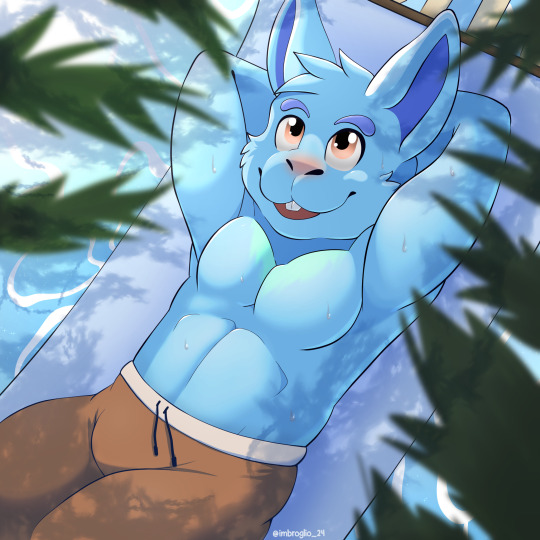#imbros
Text
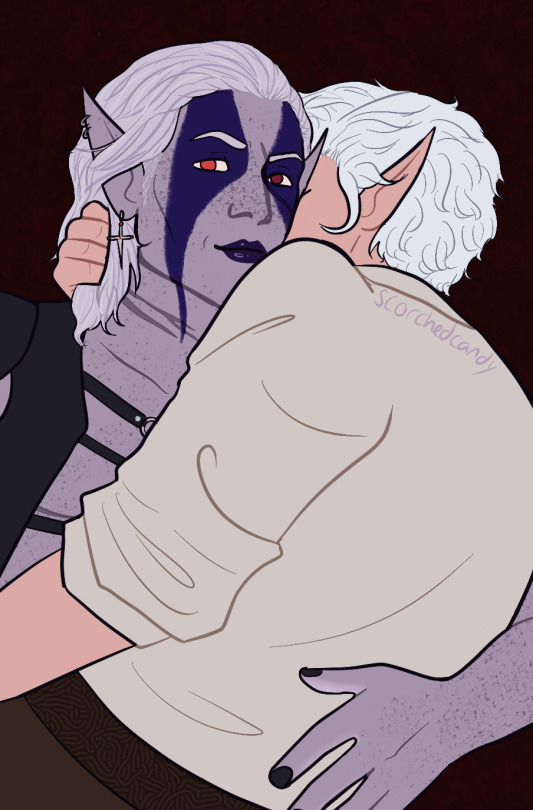
Day 14 - Romance
#I’ve drawn sage and gale before so imbros and astarion for today#I had the pose from Wilde in my head and so#I’m not immune to drow bard x astarion romance#my art#digital art#my ocs#oc: imbros#bg3#astarion#bg3tober#bg3tober 2023#inktober#inktober 2023
11 notes
·
View notes
Text
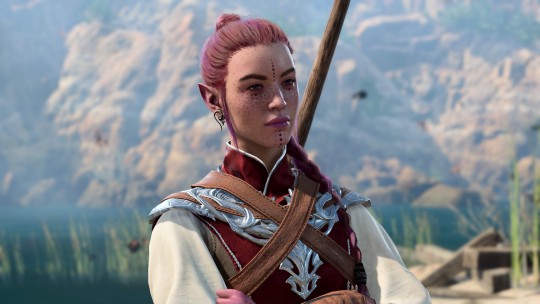


Three Idiots with Tadpoles in their heads
Alphira - Wild Magic Sorcerer (Half Fey-Eladrin)
Imbros - Necromancer Dark Urge (Half-Drow)
Laughter - College of Lore Bard (Asmodeus Tiefling)
#OC: Lah#OC: Alphira#OC: Imbros#BG3#Baldur's Gate 3#Alphira kisses Gale because im hilarious#Imbros and Astarion smooch#Laughter is kissin Halsin
9 notes
·
View notes
Text
I saw a man this morning
Who did not wish to die;
I ask, and cannot answer,
If otherwise wish I.
Fair broke the day this morning
Against the Dardanelles;
The breeze blew soft, the morn's cheeks
Were cold as cold sea-shells.
But other shells are waiting
Across the Aegean sea,
Shrapnel and high explosive,
Shells and hells for me.
O hell of ships and cities,
Hell of men like me,
Fatal second Helen,
Why must I follow thee?
Achilles came to Troyland
And I to Chersonese:
He turned from wrath to battle,
And I from three days' peace.
Was it so hard, Achilles,
So very hard to die?
Thou knewest and I know not—
So much the happier I.
I will go back this morning
From Imbros over the sea;
Stand in the trench, Achilles,
Flame-capped, and shout for me.
— I Saw A Man This Morning, by Patrick Shaw-Stewart
(context and some incoherent opinions below)
CONTEXT: Shaw-Stewart was a British soldier in WWI. His only poem, ‘I Saw A Man This Morning,’ was written in a period of rest before returning to fighting and was published posthumously. He was killed in battle in 1917.
this is one of my all-time favourite poems. like, it lives rent free in my head and sometimes i just recite it to myself and go insane
the repetition of ‘hell’ in the fourth stanza and then its echo in the name helen?? like omg?
and those last two lines – ‘stand in the trench, Achilles, / Flame-capped, and shout for me.’ SCREAM
i struggle to form coherent thoughts about this poem but yeah it’s pretty awesome
1K notes
·
View notes
Text


Men of the 2nd Royal Naval Brigade, Royal Naval Division, practising an attack from a trench on the Island of Imbros. June 1915. The map gives you an idea of how close Lemnos and Imbros were to the landing areas.
5 notes
·
View notes
Text
"I saw a man this morning"
Patrick Shaw-Stewart (1915)
I saw a man this morning
Who did not wish to die
I ask, and cannot answer,
If otherwise wish I.
Fair broke the day this morning
Against the Dardanelles;
The breeze blew soft, the morn's cheeks
Were cold as cold sea-shells.
But other shells are waiting
Across the Aegean sea,
Shrapnel and high explosive,
Shells and hells for me.
O hell of ships and cities,
Hell of men like me,
Fatal second Helen,
Why must I follow thee?
Achilles came to Troyland
And I to Chersonese:
He turned from wrath to battle,
And I from three days' peace.
Was it so hard, Achilles,
So very hard to die?
Thou knewest and I know not—
So much the happier I.
I will go back this morning
From Imbros over the sea;
Stand in the trench, Achilles,
Flame-capped, and shout for me.
2 notes
·
View notes
Text
Earliest known mention of a 'flying ointment' was used by Hera in the Iliad, dated 8th - 7th century BCE. A flying ointment is a hallucinogenic ointment said to have been used by witches to achieve ‘flight,’ whether the implication is physical or spiritual.
With ambrosia first did she cleanse from her lovely body every stain, and anointed her richly with oil, ambrosial, soft, and of rich fragrance; were this but shaken in the palace of Zeus with threshold of bronze, even so would the savour thereof reach unto earth and heaven. Therewith she anointed her lovely body [...] (14.171-6)
[...] but Hera darted down and left the peak of Olympus; on Pieria she stepped and lovely Emathia, and sped over the snowy mountains of the Thracian horsemen, even over their topmost peaks, nor grazed she the ground with her feet; and from Athos she stepped upon the billowy sea, and so came to Lemnos, the city of godlike Thoas. (14.226-31)
[Hera and Hypnos] left the cities of Lemnos and Imbros, and clothed about in mist went forth, speeding swiftly on their way. To many-fountained Ida they came, the mother of wild creatures, even to Lectum, where first they left the sea; and the twain fared on over the dry land, and the topmost forest quivered beneath their feet. (14.282-6)
[Zeus] “Hera, with what desire art thou thus come hither down from Olympus? Lo, thy horses are not at hand, neither thy chariot, whereon thou mightiest mount.” (14.298-9)
-Perseus
48 notes
·
View notes
Text
The third battle of Centro ( 16/02/79)

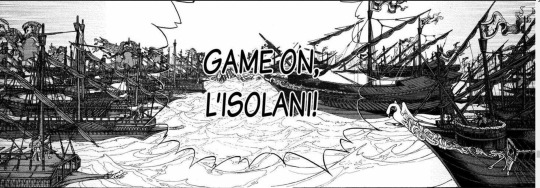
The Third Battle of Centro, also known as the Phoenician War, was fought on the 16th of the month of Tencere, in the year 79 CTR, between a combined fleet consisting of the Knights of Rhodes, Sicilia, Naples, Genoa, Balt Rhein, and Li'solani, against the fleet of the Turkiye-Venedik alliance in the sea of Centro, near the city of Phoenicia. This was the third round of fighting in the entire conflict at sea between the two powers, in an attempt by the Imperial and Crusader alliances to dominate the waters of Centro after the failure of the land invasion of Sud. The Turkiye-Venedik fleet won a landslide victory, killing many of the Crusaders' commanders, capturing most of their warships, and taking many prisoners and booty. This battle was the end of the Balt Rhein Empire's dominance of the Centro and the loss of its vassal state on the island of Crete. It also had a major impact on the first appearance of the Turkiye naval dominance as the new ruler of the Centro Seas.
Power map of Balt Rhein Turkiye after the battle of Cinza.

several Countries in Centro and Mediterranean Before a Battle.
Prime Minister Louis of Balt Rhein was still not giving up his passionate determination to continue fighting Turkiye. even though the expeditionary force sent to Sud was destroyed. while according to miller, (who argues that the expedition to Sud was not at the direction of St Michael) Louis once again used his bet to be able to take Sud by sea. His strategy was to cut off all Turkiye lines of communication and supplies by taking control of Centro so that he could directly threaten Imbros (a Venedic colony) and Constantinople. Louis mediated with Pope Nicholas V to organise another Crusade. Despite Rome's difficulties in mobilising the masses, due to internal conflicts in western Europe, the pope's invitation was successful in getting Genoa, Sicily, Naples and the Hosipitaller Knights of Rhodes to form an alliance.
On 22 Lale, 79 CTR, the Naples and Sicily Fleets of 100 galleys each besieged Li'solani. Donattello Doria immediately surrendered, and asked for security guarantees. even offered military assistance in order to fight the Türkiye and Venedik. thus, Li'solani broke out of his agreement with the Türkiye 2 years ago that they had signed themselves. Donatello's betrayal reached the venedik and received a strong reaction from Antonio Lucio, Doge Venedik. Antonio conveyed this news directly to Constantinople. in response to this Zaganos Pasha ordered careful military preparations to Hamza Pasha as the Kapudan Bahriye who was positioned in Phoenicia. in order to mobilise his fleet.

Turkiye Galleys in 15th Century
In addition to taking control of Li'solani, the crusader fleet attacked any ship passing through the western centro. It did not even distinguish which ships belonged to Turkiye from those belonging to their own allies. On the 28th, there was an incident of robbery of a venedic merchant ship by the crusader fleet. The raids expanded to reach Ponente, Tharos, and St. Lucino. The two countries on the island of Crete decided to submit to the crusaders. facing the worsening situation in Centro. Antonio Lucio decided to make military preparations. The levy of goods was increased, and soldiers and archers were recruited. Marco Quirini, one of the Venedic commanders who participated in the first Centro War, was appointed Commander in Chief in place of Silvestro Brega. at the head of the Venedic Fleet mobilised in Imbros, consisting of 150 galleys.

Various Types of Venetian Ships
On the 3rd of Tencere, Hamza Pasha ordered the addition of 150 galleys in Phoenicia and immediately accelerated the mobilisation. With this new navy, Hamza Pasha tried to get out of Phoenike Harbour and met a small part of the crusader fleet that was coincidentally trying to get closer to Phoenike for the sake of looting. A brief battle ensued, and Hamza Pasha was able to repulse the invaders' attack. From this brief battle, Hamza Pasha realised that it seemed that the crusaders were attacking without any coordination or prepared strategy. So there was a possibility of winning the battle.
The next day, the Balt Rhein Imperial Fleet, led by Andreas Patarini, left the vessels for Li'solani, where the Crusader Fleet was supposed to be assembled. In the evening, a council of war was held. A dispute ensued over who would command the combined Crusader Fleet. Andreas put himself forward to lead the fleet. However, the majority of the Sicilian and Genoese forces voted against him. The Genoese instead put forward Giustiniani (their warlord, who was rumoured to have disappeared after the battle of Gallipoli, 77 CTR) to lead their leet. It is known that Giustiniani did not die and managed to survive his humiliating defeat and escape to Rhodes. Giustiniani is currently on his way to lead the Hospitaller Knight Fleet to Li'solani to answer the call of the papal alliance.
However, the Giustiniani's arrival was very slow due to a westerly wind that was contrary to the direction they were travelling. Five days later, on Tencere 8, Giustiniani arrived at Li'solani and immediately convened the council of war once again. Provveditore Venier (Capitan of Naples), Albano Capello (Genoa), and Poei Manfredi (Li'solani) urged a direct attack on the Turkishye Venedik forces towards their headquarters, i.e., Phoenicia, given that both fleets were not yet fully organised. But Giusitiniani was hesitant about this proposal and preferred to target an easier target, i.e., the city of Chielo or the city of Scoglio. This proposal was supported by the commanders of the Balt Rhein. The crusader commander accused the Balt Rhein of greed and stubbornness, wanting only the result of the war for themselves. The division among the councils of war continued into the night. Nevertheless, Giustiniani finally supported the first opinion. and decided to reorganise his fleet, getting ready to face the Combined Turkiye-Venedik Fleet.
Battle
The fleet of the Crusader Alliance, consisting of 400 ships (according to Marino Satino), 200 galleys from Balt Rhein, 40 from Rhodes, 30 from Li'solani, 80 from Sicily, 30 from Genoa, and 20 from Naples. (Among all the ships, those of Genoa and Naples were the largest.) The movement of the Crusader fleet towards the battlefield was very slow due to the lack of wind. and the fleet only departed on the 12th. Meanwhile, the Venedic Turkiye Combined Fleet arrived in Phoenicia, consisting of 300 ships. The Turkish ships were dominated by small galleys (and no large ships), totaling 150 galleys. supported by the Venedic Fleet (100 Galleys, 20 Formosse, and 30 Mescolare). Hamza Pasha was appointed Commander-in-Chief of the Combined Fleet. and prepared to organise his battle formation. upon hearing that the Crusader Fleet was moving towards Phoenicia.
The two fleets met on the Phoenicia Sea Route on the 16th. Seeing that the enemy forces had more fleets and larger ships, Hamza Pasha decided to face his galleys against the galleys of the Balt Rhein and Rhodes. while the Venedic forces faced the Genoese, Naples, and Li'solani. The two ships approached each other and began to fire arrows. Hamza Pasha arranged the formation of his galleys close to the enemy galleys so as to make it easier for his soldiers to fight each other, like a war on land. The war continued with mutual sword-slashing and arrow-shooting for a long time, turning into a frightening, bloody battle. The Imperial troops tried to break free from the oars of the Turkiye galleys. However, the two galleys had already docked and could not be released. Despite the bumpy and unstable tidal waters, the Turkiye troops were able to take control of the situation. and killed many of the Empire's marine troops. The Balt Rhein troops were in disarray as their commander, Andreas Patarini, was killed, so they decided to retreat, leaving their allies without a second thought. According to Satino, Andreas staggered on his ship due to the tide. then fell into the sea and drowned.

Hamza Pasha General Commander of the Turkiye-Venedik Fleet
On the other hand, the Venedic battles against Naples, Genoa, and Naples are still ongoing. The Naples ships had difficulty keeping their fleet formation. So Marco Quirini took this golden opportunity to close his ships with the Naples ships. Provveditore Venier ordered his ships to retreat for a while in order to draw the Venedic forces further away from their gallai and thus separate them from the Main Fleet. The ships of Naples fought back by advancing ahead of the Venedik fleet; one of its commanders, Girolamo Minotto, misinterpreted Provveditore Venier's signal to stay away, according to Satino, and attacked the Venedik flagship instead. Seeing the tactical failure of the Naples forces, the commander of the Venedik Galleries, Lorenzo Festa, laid siege to the Naples Fleet. while Gianpaolo Cavallo attacked the Li'solani Galleries to separate them.
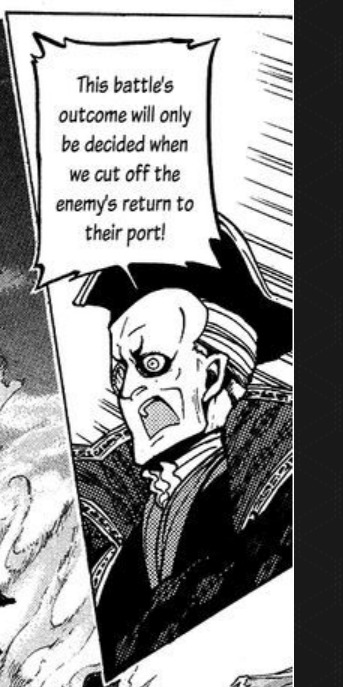
Marco Quirini commander of the venedic navy, who replaced Silvestro Brega.
Seeing the chaos in the formation of his battle fleet, Giustiniani tried to help by mobilising his remaining reserve ships. in order to release the blockade of the Venedik Force over the Naples troops. However, the Turkiye Galley, led by Hass Murad Pasha and Mesih Pasha, came from the side and intercepted the Genoa ships. The Genoa ships were able to match the Turkiye ships in battle by relying on the large size of their ships. thus being able to escape the interception. Venier himself was badly wounded by the many arrows that pierced him, feeling unable to continue the battle. He decided to withdraw his fleet and retreat. although the effort was quite impossible. However, Venier was able to make a feint with some of his crew by disguising himself as a common soldier and escaping with some of his ships that managed to escape the siege.
As a result, the Genoese and Rhodesians were left alone. This angered Giusitiniani. upset, he decided to return to Li'solani. hoping that he could avenge his painful defeat at the Sea of Phoenicia. This third Centro Sea battle lasted from dawn to sunset. The combined Turkiye-Venedik fleet was finally able to defeat the Crusader fleet. Many captains and crew members of enemy ships were killed and taken prisoner. and captured 57 galleys and 10 galleons, according to Satino's records. while the rest were destroyed during the battle. while the Egyptian historian, Maqrizi, says the number reached 40. Nicollo (one of the Venedik historians who participated in the war) details the ships captured by the Venedik forces. Lorenzo Festa captured 70 galleys belonging to Li'solani, while Marco Quirini captured 10 galleons belonging to Naples and one flagship galleon belonging to Genoa. The record of warships captured by the Turkiye is not mentioned by Nicollo except based on Maqrizi's account. The Turkiye captured 57 galleys, or at least 40 galleys, belonging to the Balt Rhein and 22 galleys belonging to Rhodes and Li'solani. Casualties on the Turkiye and Venedik sides reached at least 4000 men. on the enemy side, as narrated by Maqrizi, reached 30000 men. Most of the casualties were from the Balt Rhein.
Aftermath
Four days after the third Centro battle, Hamza Pasha and Quirini organised a pursuit of the fleeing Crusader fleet. The Turkiye-Venedik fleet approached the island of Crete and laid siege to Tarros and Ponente, which were the bases of the Balt Rhein Fleet's escape. After more than five days of siege, both cities were defeated. ending both city governments and entering into Turkiye domination. Hamza Pasha captured eight generals of the Balt Rhein superintendent and some resisting troops and executed them. Next, on the 27th, the Turkiye Venedik Fleet moved towards Li'solani through the Witch Straits to shorten the journey. Giustinianni had taken full command of the city's controls and taken Donatello Doria prisoner in his own palace, then prepared for the final battle.
On the 28th, fighting broke out again around Li'solani waters. The Genoese and Li'solani Fleets put up a vigorous resistance to the attacks of the Turkiye-Venedik Fleet, destroying parts of their galleys. Giustiniani tried to keep the enemy fleet away from the island, but was unsuccessful. Due to the unstable wind direction, the situation was reversed when the wind direction actually blew to the west, which brought the Genoese and Li'solani ships closer to land. The Turkiye-Venetian fleet took advantage of this opportunity by showering them with fire arrows in order to burn their ships and surrounded them. Giustiniani was forced to change his strategy by adopting defensive tactics in the fortress. The Turkiye troops carried out the siege from the 1st to the 6th of Raki. Li'solani decided to surrender. Despite Giustiniani's ingenuity, he was able to defend the city and thwart two consecutive attacks by the Turkiye-Venedik fleet. Due to the discontent of the inhabitants and merchants, they wanted the Genoese to withdraw from their city.
Hamza Pasha accompanied by the Janisaries entered the city on the 6th and ordered the troops to spread out, in search of Giustiniani. However, they did not find him. Most likely, Giustiniani had escaped with 700 of his troops by robbing some of Li'solani's Galleys and then returning to Italy. Hamza pasha then stormed Donatello's palace and arrested him while expressing his anger for betraying the Anti-Imperial Tripartite that had been agreed 3 years earlier. in return, Hamza Pasha placed Donatello's son, Antonio Doria as the new Li'solani ruler. signifying the end of the independence of the Li'solani government. and transformed into a Vassal state under the auspices of Turkiye.
The victory at Centro marked the beginning of the fledgling Turkiye naval supremacy that would continue to develop until the end of the Stratocracy and the return of the Ottoman Empire. Nicollo says that although the Turkiye lacked the quality of ships capable of matching the Venediks, Genoese, and Li'solani, and their ships were mostly small galleys, their rowers were adept at mobilising them according to the tide and wind direction. Hamza Pasha's strategy, docking fellow galleys until the transfer of rowing troops to enemy ships, and the ambush of the Genoese ship, which was in fact larger, made the Venedik commander, who witnessed the Turkiye way of war for the first time at sea, truly amazed. seen, several times the Turkiye troops applied the strategies of the Venedik troops themselves. One of them was pouring oil or soap on the enemy's deck to throw off their balance when moving. Or, the troops' shoes were coated with sand so that they could walk on the soap. Because of this, Nicollo commented, "This tribe of horsemen has learned something from us.".
According to Seth Perry, "the destruction of the Crusader Fleet at Centro emphasised the influence of Turkiye, this time not only dominating the land but also the sea. This was evidenced by the conquest of Tarros, Ponente, Li'solani, and finally Vessels. making Turkiye a major player in naval warfare. next to Venedik, Li'solani, and Genoa.
#shoukoku no altair#altair a record of battles#kotono kato#kato katono#navy#fanfic#fan fiction#ottoman#centro#zehir zaganos
1 note
·
View note
Note
consecution lol, for the WIP asks? I think about those snippets a lot 😅
I have 67k of this fic, so it took me awhile to figure out what snippet I wanted to share! This is another slightly long one, so the rest is under the cut.
For the uninitiated, Yann Surefire is Caleb reborn and he is not aware of that fact - his memories are disjointed. Essek is going under the pseudonym of Imbros Vrinn and wears a Ring of Alter Self to maintain his disguise. Fiona is Jester's granddaughter and a lot of trouble, as any Lavorre would be. This whole futurefic is blatantly self-indulgent and I will not apologize.
This fic is approximately 45% done, and I’m attempting to finish it completely before I start posting it - but I might change my mind and start posting some of the earlier chapters like I’m doing for 2 Tusk 2 Love. I guess we’ll see!
If you want to read more snips from this, they’re all under this tag.
“Yann!” Fiona exclaimed as their visitor appeared in the doorway. “Esse—IMBROS. You didn’t tell me he was here!”
Essek shrugged. At that point, he wondered if he should just start going by his actual name, if Fiona was going to shout fragments of it every time she was caught off guard.
“Vrinn invited me for dinner,” Surefire said, glancing down at the pot in front of him. “You’re making soup? Can I help?”
Fiona’s eyes were way too amused – and way too bright – as she glanced over at Essek. “You cook?” she asked Yann delightedly. “Of course you can help!” She pulled a knife out of a block and handed it to Surefire handle-first. “Can you chop those vegetables? Imbros is just going to watch anyway.”
That was just uncalled for. “I offered to help you cook earlier,” Essek grumbled.
Fiona beamed over at him. “Do you want to help Yann chop vegetables?” she asked, batting her eyelashes. Essek realized abruptly that this had all been a plot against him, and Fiona Lavorre knew him entirely too well. “You can show him how to do it properly.”
He ignored the obvious innuendo in her statement and fetched a second knife from the block. Surefire had already produced a cutting board from somewhere – had he been in this kitchen before? – and was getting to chopping up an onion. The kitchen was not the largest, and Essek found the only remaining counter space was right next to Surefire; he gritted his teeth and searched for another board to cut on.
“This is the only one,” Surefire said apologetically, sliding the unused end of his own board towards Essek. “We can share. If you like?”
There was still something subdued about his expression; Essek didn’t like it. Perhaps that was what possessed him to accept Surefire’s offer and begin to slice a tomato on the opposite end of the board, standing so close that their arms brushed as they worked.
Surefire had a nice scent, one that Essek tried desperately not to breathe in as they quietly chopped vegetables next to one another. Even Fiona was quiet, chopping herbs on the opposite side of the stove.
“We had visitors today,” Surefire said suddenly. His voice was soft, barely loud enough to be heard by the two of them. Essek glanced to the side, but Surefire wasn’t watching him, staring instead at his own careful chopping. “Elves from Wildemount.”
Essek’s knife slipped, nicking the side of his finger. He hissed and stuck his finger in his mouth, a terrible habit he’d picked up from Caleb after years of cooking together.
Surefire finally looked over at him, concerned. “Are you okay?”
“I cut myself,” Essek said crossly, casting about for a rag – he located one hanging from a hook near the sink and wrapped it carefully around his finger, pressing on it firmly to staunch the bleeding.
“Let me see that,” said Surefire, pulling Essek to him; they would have been standing nose to nose if Essek had been Surefire’s height. Not seeming to register their closeness, Surefire gently took Essek’s hand in his own, sliding the rag away and running his fingertips along the cut on the side of Essek’s finger. His touch was soft, and warm, and Essek felt a spike of heat run through him.
Surefire whispered a vocal component of some sort and green healing magic briefly enveloped Essek’s finger. When the light faded, his altered flesh was as good as new, unmarred by any cut.
“Better?” Surefire murmured, watching Essek with the hint of a smile at the corner of his mouth. He continued to hold Essek’s hand in his own, absently running his fingers along the rings that decorated his fingers. “It can be useful, having a druid around.”
Essek’s brain was slightly addled from the combination of Surefire’s touch and his amused gaze. “Ah. Yes. Thank you?”
Behind them, Fiona poorly stifled a giggle. Surefire released Essek’s hand immediately, turning back to his chopping with a flush high on his cheeks.
Ask me about my wips! | Other responses
#my wips#wip game#critical role#shadowgast#consecution!au#yann surefire's reincarnation extravaganza#asks#also if you're wondering why I'm in the middle of two enormous wips that both feature not-caleb calebs#I wonder that too#they may be niche but I love them both so
34 notes
·
View notes
Text
04 June 2023
Weak Specimens
Canberra
04 June 2023
I had everything figured out. I was going to finagle a way to get out to Duntroon, and I’d make a quick little post about two First World War generals commemorated in the Canberra area, and it was going to be a nice little update before I went to Sydney. And then I got a cold.
This was not conducive to excursions.
That having been said, it has got me thinking about the role of illness and disease in war. Prior to the twentieth century, sickness was by far the biggest killer of soldiers. A posting to the West Indies (the modern Caribbean) was a near death sentence, for yellow fever would rip through the ranks of any regiment dispatched there. The pestilence faced by the British Army in the Crimea caused a scandal in the press at home. You might dodge the cannonball, or the bullet may miss its mark, but typhoid and dysentery always loomed ahead, waiting to strike you down.

By the twentieth century, medical science had advanced just enough that you were more likely to die in the trenches than from sickness - at least until the 1918 Influenza reared its ugly head - but unpleasant afflictions could still strike a soldier at any time. Nowhere was this more true than on the peripheral fronts - Southern Africa, Salonika, Mesopotamia, Palestine and of course Gallipoli. The terrible sanitary conditions on the front line attracted vermin, and vermin carried disease - by the summer of 1915, anything from half to three quarters of the men on the peninsula had some kind of illness, and diarrhoea was omnipresent.
(I promise this blog will not be entirely about that, but the runs are important to my point here.)
Diarrhoea wasn’t just uncomfortable - it had an impact on the combat performance of troops. They grew weaker from dehydration, exacerbated by the limited water and the heat of Gallipoli in the late summer. The island staging bases of Lemnos and Imbros was no better - Robin Prior notes that upon the British 11th Division’s departure from Imbros to take part in the landings at Suvla Bay, nearly every man had contracted ‘a particularly weakening form of diarrhoea’ and were also suffering from the side effects of a cholera inoculation.
These illnesses were not the reason for the failure of the campaign - the plan was fatally flawed from conception, and the direction of the August Campaign had been bungled before the first troops left their start lines - but it does play a role in the mythology of the campaign.
Remember how I said we’d mention Charles Bean again? Bean is a great example of a historical ‘problematic fave.’ He had a clear empathy for Australian troops, and his vision for the Australian War Memorial was laudably democratic and egalitarian in nature. His official history of the Australian Imperial Force is a mammoth work of historical literature. Yet he was also very much a man of his time - apart from his casual antisemitism , he was, like many educated men, a believer in eugenics. Bean saw the ailing British soldiers of the August campaign and saw confirmation of what he probably already believed - that the urban poor of Great Britain had degenerated. ‘After 100 years of breeding in the slums, the British race is not the same’ as it had been at Waterloo, he wrote, and that Britain had bred ‘one fine class [the upper class] at the expense of the rest.’

It should be noted that this was a private diary entry, and there were a great many British men who would have agreed with him - there was an obsession with urban degeneracy in the first years of the twentieth century. Yet the converse of this - the idea of the big, strong, manly Anzac, which was already being stoked by Bean and the British journalist Ashmead-Bartlett - has stuck around in the Anzac legend, and echoes of Bean’s private sentiment remain. I remember being told in high school about how Australians were huge and bronzed, while British soldiers were all short, stunted coal miners. I don’t think my teacher knew they were parroting eugenist ideas from the 1910s; I don’t think most people really think about it.
I’m sure this came out more than a little incoherent, as I’m still on the mend, but I thought I ought to put pen to paper on this line of thinking before I forgot. I just think there’s a benefit to thinking historically about myths, even ones that seem harmless. They all come from somewhere.
And on that note, carrots aren’t actually good for your eyesight. The RAF made that one up to prevent people from finding out they had radar.
3 notes
·
View notes
Text
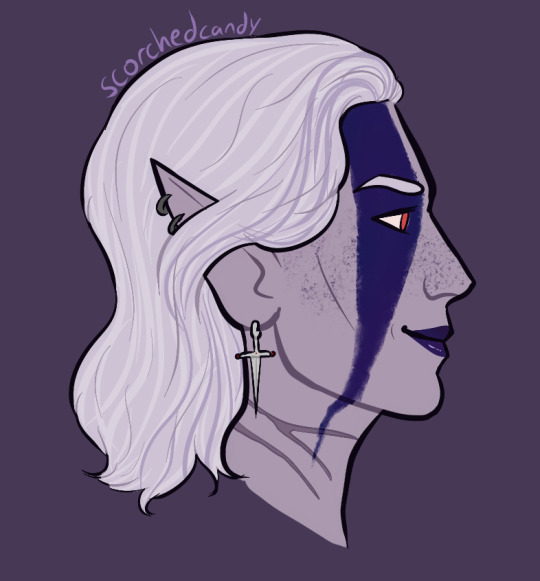
Day 1 - Tav
#quick and belated bc I was watching otgw with my mom#I already drew sage so this is imbros#he’s my drow bard I’m currently playing since I completed sages run#bg3tober#bg3#oc: imbros#my ocs#my art#digital art#inktober#inktober 2023#bg3tober 2023
3 notes
·
View notes
Text

Absolutely Totally Not Shady™ Necromancer
#OC: Imbros#BG3#Baldur's Gate 3#He's a Dark Urge Wizard#Totally normal fellow nothing weird to see here!
3 notes
·
View notes
Text
I saw a man this morning
Who did not wish to die
I ask, and cannot answer,
If otherwise wish I.
Fair broke the day this morning
Against the Dardanelles;
The breeze blew soft, the morn's cheeks
Were cold as cold sea-shells.
But other shells are waiting
Across the Aegean sea,
Shrapnel and high explosive,
Shells and hells for me.
O hell of ships and cities,
Hell of men like me,
Fatal second Helen,
Why must I follow thee?
Achilles came to Troyland
And I to Chersonese:
He turned from wrath to battle,
And I from three days' peace.
Was it so hard, Achilles,
So very hard to die?
Thou knewest and I know not—
So much the happier I.
I will go back this morning
From Imbros over the sea;
Stand in the trench, Achilles,
Flame-capped, and shout for me.
I Saw A Man This Morning – Patrick Shaw-Stewart
#this is one of my fav poems#it just makes me so insane#‘stand in the trench#i scream every time#for context he wrote this in a period of rest before fighting at gallipolli (wwi) and it was the only poem he ever wrote#crazy#maybe he’d have written more if he hadn’t died in 1917 :(#tw war#poetry#achilles#the trojan war
19 notes
·
View notes
Text
Lycaon escaping exile only to be killed by Achilles:
youtube
“But then Achilles met someone fleeing the river—
Lycaon, a son of Dardanian Priam,
whom he’d captured once before in a night attack,
taking him against his will from his father’s orchard.
With his sharp bronze Lycaon had been cutting
young shoots from off a fig tree to make chariot rails.
He’d had the bad luck to meet godlike Achilles.
That time, Achilles took him in his ship and sold him
in well-built Lemnos, where the son of Jason
had paid the purchase price. From there, Eëtion,
a friend and guest from Imbros, had ransomed Lycaon,
paying a huge sum, then sent him on to Arisbe.
He’d escaped from there in secret and gone home,
back to his father’s house. Once he returned from Lemnos,
for eleven days his heart enjoyed his friends.
On the twelfth, some god threw him back again
into Achilles’ hands, who was about to ship him,
against Lycaon’s wishes, down to dwell with Hades.
When swift-footed, godlike Achilles saw Lycaon
totally unarmed, without his helmet, shield, or spear,
for he’d thrown these on the ground, exhausted
after he’d escaped the river, worn out and sweating…”
—Iliad, Book 21
0 notes
Text
Discover the Enchanting Islands of Turkey's Hidden Gems
Hey, Tumblr fam! Are you ready for a virtual journey to the mesmerizing islands of Turkey? Buckle up as we embark on an adventure filled with sun-kissed beaches, crystal-clear turquoise waters, and captivating natural beauty. I've stumbled upon an incredible article on Planturkiye.com that showcases the top most beautiful islands in Turkey, and trust me, you won't want to miss this!

🏝️ Dive into the Island Paradise 🌊
Turkey, known for its rich history and cultural heritage, is also home to some of the most breathtaking islands in the world. From the bustling gems of the Aegean to the tranquil escapes of the Mediterranean, these islands offer a unique blend of tranquility, adventure, and pure bliss.
Read full Blog from the link given below:
🌅 Unveiling the Hidden Gems 🗺️
Bozcaada: Nestled in the Aegean Sea, Bozcaada is a haven of vineyards, charming stone houses, and pristine beaches. Indulge in delicious local wines, explore the medieval castle, or simply unwind on Ayazma Beach.
Büyükada: Escape the hustle and bustle of Istanbul and venture into Büyükada, the largest of the Princes' Islands. Explore its quaint streets by bicycle or horse-drawn carriage and bask in the serenity of its car-free environment.
Gökçeada: Known as Imbros in ancient times, Gökçeada boasts unspoiled nature, picturesque villages, and secluded beaches. Immerse yourself in the local island life and witness breathtaking sunsets that will steal your heart.
Cunda Island: Connected to the mainland by a causeway, Cunda Island offers a blend of history, art, and stunning coastal landscapes. Explore the charming streets of Ayvalık, savor fresh seafood, and soak in the island's bohemian atmosphere.
Kekova: Dive into a hidden paradise with Kekova, an island scattered with ancient ruins and submerged historical sites. Snorkel or kayak along its coastline to marvel at the sunken city, an archaeological marvel beneath the crystal-clear waters.
📸 Unforgettable Moments 🌞
As you read through the article on Planturkiye.com, you'll be captivated by the stunning photographs accompanying each island description. Imagine yourself lounging on white sandy beaches, discovering hidden coves, and immersing yourself in the warm hospitality of the locals. These islands are a photographer's dream, offering a plethora of unforgettable moments just waiting to be captured.
🌴 Ready for Your Island Escape? ✈️
So, are you ready to embark on a virtual island-hopping adventure across Turkey's most beautiful gems? Head over to the article on Planturkiye.com (link: [insert URL]) to delve deeper into the magic of these islands. Let your imagination run wild as you envision yourself strolling along pristine shores, taking in breathtaking sunsets, and creating memories that will last a lifetime.
0 notes
Text
A different sauce for every artist صلصة غير لكل فنان
In food brand Goody's latest campaign, pasta is their canvas, in which consumers can express themselves to come out with a masterpiece/painting.
Goody will accompany passionate foodies with a rich range of pasta sauces to help them shine, and add a sprinkle to their Artistic masterpieces, each carrying an artistic story of their own.



Credits
Leo Burnett Jeddah:
Associate Creative Director: Michel Azar
Art Director: Salah Jandali
Art Director: Asser Taha
Sr Graphic Designer: Maya Homsi
Copywriter: Amina Mokhtar
Studio Manager: Khalid Al Khatib
Business Director: Mutaz Jad
Communication Manager: Imad Jurdi
Film Production
Production House: Studio Perazzoli
Film Director: Luca Perazzoli
Stop Motion Director: Dario Imbro
Studio Manager: Deborah Mazzara
1 note
·
View note
